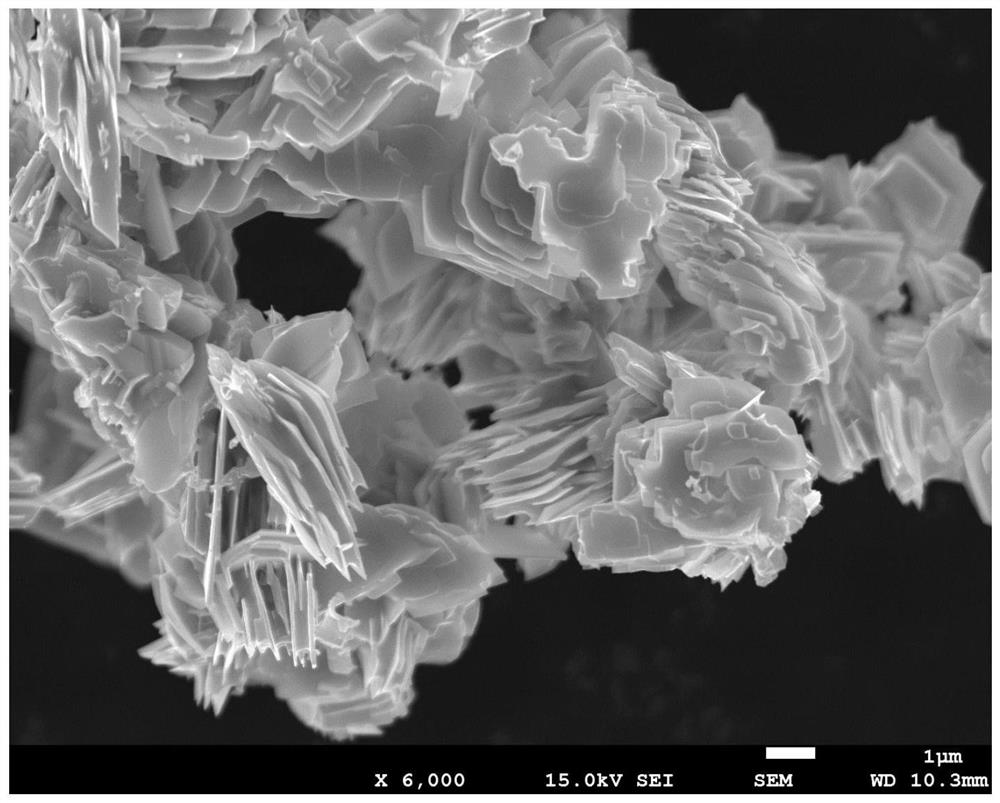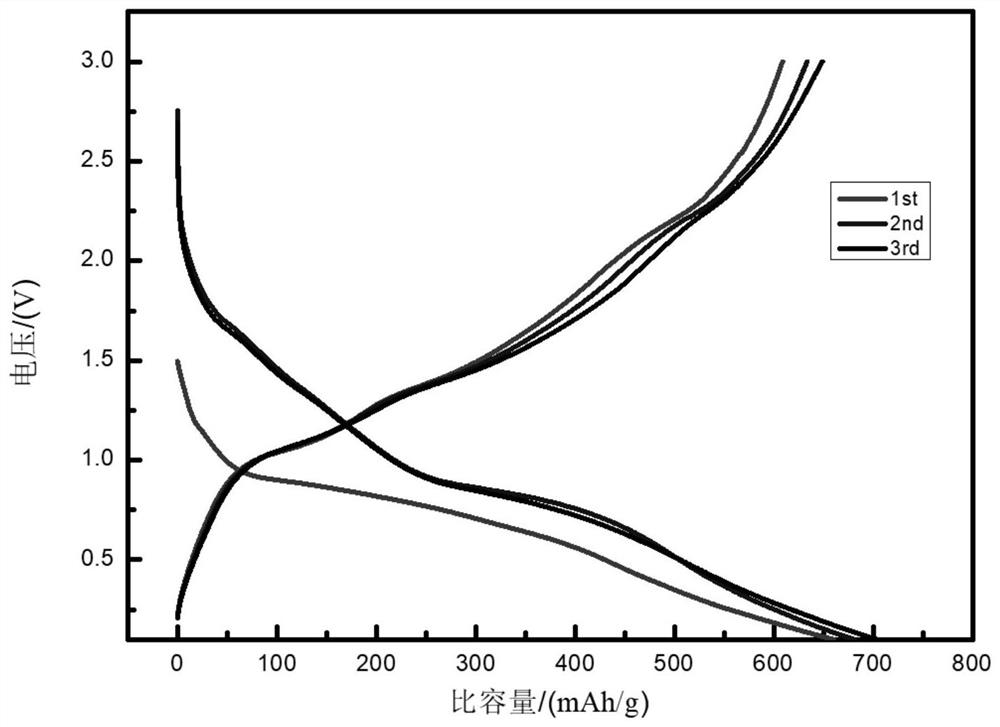Antimony molybdenum sulfide-carbon composite material and preparation method and application thereof
A carbon composite material, sulfide technology, applied in antimony compounds, chemical instruments and methods, carbon preparation/purification, etc., can solve the problem of low conductivity, high volume expansion coefficient, metal sulfide cycle performance and rate performance deterioration and other problems, to achieve the effect of increasing electrical conductivity and large specific surface area
- Summary
- Abstract
- Description
- Claims
- Application Information
AI Technical Summary
Problems solved by technology
Method used
Image
Examples
preparation example Construction
[0028] A preparation method of antimony molybdenum sulfide-carbon composite material, comprising the steps of:
[0029] 1) Preparation of antimony sulfide: Dissolve antimony chloride, chelating agent and sulfur source in the reaction solution according to a certain ratio, stir evenly, move to the inner lining of the autoclave, and react at 160-220°C for 10-16h, react After the end, the product is centrifuged, washed, and dried to obtain antimony sulfide; the chelating agent is cetyltrimethylammonium bromide, sodium dodecylbenzenesulfonate, polyvinylpyrrolidone, and sodium dodecylsulfonate. At least one; the sulfur source is at least one of sodium sulfide, thiourea, and sodium thiosulfate; the carbon source is at least one of glucose, sucrose, ascorbic acid, and melamine. The reaction solution is prepared by mixing dimethyl phthalate, deionized water, and ethylene glycol in a volume ratio of 10-40:30-60:20-60. When antimony chloride is measured in 5 mmol, the total mass of the...
Embodiment 1
[0033] Weigh 1.14g of Sbcl with a balance 3 , 0.3g of CTAB, 0.2g of SDBS, 1.2g of sodium sulfide, 0.38g of thiourea. Transfer it into a beaker with a volume of 100mL, then add 30mL of deionized water, 25mL of DMP, and 20mL of ethylene glycol, and stir magnetically for 10min at a speed of 260r / min. Then the mixture was transferred to a 100 mL reactor lining, and reacted at 180° C. for 13 h. After the reaction, the reactor was left to stand, and the upper layer liquid was removed, and the centrifuge was used to wash three times with deionized water and two times with ethanol at a speed of 7000r / min, and then dried in a vacuum oven at 80°C for 10 hours.
[0034] Weigh 0.4g of Sb with a balance 2 S 3 , the sodium molybdate of 0.2g, the sodium sulfide of 0.24g, the thiourea of 0.228g, the glucose of 0.1g, the sucrose of 0.3g. Transfer it into a beaker with a volume of 100mL, then add 30mL of deionized water, 10mL of DMP, and 35mL of ethylene glycol, and stir magnetically for ...
Embodiment 2
[0038] Weigh 1.14g of Sbcl with a balance 3 , 0.2g of PVP, 0.2g of SDBS, 0.96g of sodium sulfide, 0.74g of sodium thiosulfate. Transfer it into a beaker with a volume of 100mL, then add 40mL of deionized water, 15mL of DMP, and 20mL of ethylene glycol, and stir magnetically for 20min at a speed of 210r / min. Then the mixture was transferred to a 100 mL reactor lining, and reacted at 200° C. for 12 h. After the reaction, the reactor was left to stand, and the upper layer liquid was removed, and the centrifuge was used to wash three times with deionized water and two times with ethanol at a speed of 7000r / min, and then dried in a vacuum oven at 80°C for 10 hours.
[0039] Weigh 0.5g of Sb with a balance 2 S 3 , 0.3g of sodium molybdate, 0.48g of sodium sulfide, 0.5g of sodium thiosulfate, 0.2g of glucose, 0.2g of ascorbic acid. Move it into a beaker with a volume of 100mL, then add 35mL of deionized water, 20mL of DMP, and 20mL of ethylene glycol, and stir magnetically for 20...
PUM
 Login to View More
Login to View More Abstract
Description
Claims
Application Information
 Login to View More
Login to View More - R&D
- Intellectual Property
- Life Sciences
- Materials
- Tech Scout
- Unparalleled Data Quality
- Higher Quality Content
- 60% Fewer Hallucinations
Browse by: Latest US Patents, China's latest patents, Technical Efficacy Thesaurus, Application Domain, Technology Topic, Popular Technical Reports.
© 2025 PatSnap. All rights reserved.Legal|Privacy policy|Modern Slavery Act Transparency Statement|Sitemap|About US| Contact US: help@patsnap.com



